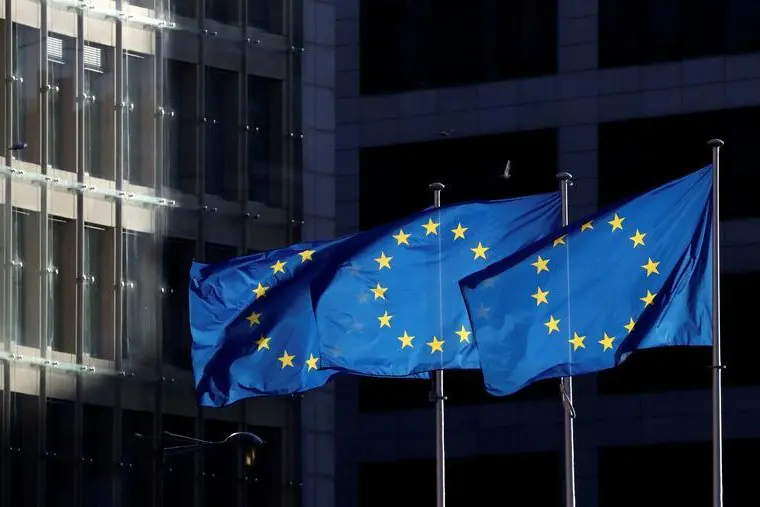PHOTO
LONDON: The European Union will launch a new travel authorization toward the end of 2022. The European Travel Information and Authorization System (ETIAS) will become a mandatory entry requirement for citizens from visa-exempt countries.
ETIAS is not a visa and visitors from nations including the UAE shall continue to enjoy the benefits of visa-free access to Europe with the new permit.
So what is ETIAS and which European countries will need the visa waiver? This article answers these key questions to help travelers get prepared for the change in European entry requirements...
Countries in the Schengen Area
ETIAS will be needed to enter the Schengen Area from a non-EU nation. The Schengen Area is a borderless travel zone consisting of the following 26 countries:
- Austria
- Belgium
- Czech Republic
- Denmark
- Estonia
- Finland
- France
- Germany
- Hungary
- Iceland
- Italy
- Latvia
- Liechtenstein
- Lithuania
- Luxembourg
- Malta
- The Netherlands
- Norway
- Poland
- Portugal
- Slovakia
- Slovenia
- Spain
- Sweden
- Switzerland
Microstates that require ETIAS
In addition to the Schengen countries listed above, the geographical location of some European microstates means that ETIAS is required de facto.
Andorra, Monaco, San Marino, and Vatican City do not have their own airports. Travelers will, therefore, need ETIAS to pass through a Schengen country such as France or Italy en route to the microstate.
ETIAS will be required to cross the external Schengen border
Currently, several third-country nationals can travel to the countries listed above using just a valid passport, for short stays of up to 90 days. When ETIAS comes into force, the visa waiver will also be necessary to cross the external Schengen border.
Conveniently, an ETIAS is valid for the entire Schengen zone. Once the external border has been crossed, international tourists can move freely among the Schengen nations without the need to apply for additional permits.
Benefits of ETIAS for travelers
The aim of ETIAS is to boost cross-border security and further reduce instances of serious crime and terrorism in Europe. This will be achieved by cross-checking the details of all visitors from outside the EU.
International databases such as Interpol and EURODAC will be consulted when screening individuals to ensure they pose no risk to the public. From 2022, tourists will be able to enjoy top destinations such as France, Germany, and Italy with even greater peace of mind.
The ETIAS application process
This added security comes at little extra effort on the part of the traveler. The ETIAS application will be quick to complete online from anywhere in the world, 24 hours a day. The electronic form requires just a few personal details and passport information. There are also some additional health and safety-related questions to check the eligibility of the individual to enter Europe.
A credit or debit card is required to pay the ETIAS fees, and the application is submitted for review.
The majority of requests will be approved following automatic screening. At this point, the ETIAS visa waiver is linked automatically to the electronic chip in the biometric passport, and the applicant is notified by email.
On the rare occasion that there is a hit in the system, the request will be reviewed manually by the ETIAS Central and National Units before a decision is made.
Do children need to apply for ETIAS?
Children under 18 must also have a valid ETIAS; the parent or guardian should complete the application on the minor’s behalf. Every individual heading to Europe requires their own visa waiver. It is not possible to apply for ETIAS as a family or group.
Traveling to Europe with ETIAS
ETIAS can be used to go to Europe for tourism and business purposes. It is also necessary to transit through the Schengen Area en route to a third country.
With a valid ETIAS visa waiver, international visitors will be able to pass through border control quickly; the visa waiver is linked to the passport and verified when the travel document is scanned.
To travel within the Schengen Area, non-EU citizens should keep their passport on their person, although there are no internal border checkpoints.
The ETIAS remains valid for 3 years or until the passport expires, whichever happens first. The permit allows for multiple trips to Europe, up to a maximum of 90 days in a 180-day period.
Schengen visa for Europe
It is important to bear in mind that the new ETIAS visa waiver is only for passport holders from visa-exempt countries. The EU has issued a list of over 60 nations whose citizens are not required to obtain a visa for Europe and it is the citizens of these countries who will need ETIAS from 2022.
Travelers from territories not included on the list will continue to require a Schengen visa to cross the external borders. Like ETIAS, the Schengen visa is valid for the entire zone however the application process is more complex and requires additional supporting documentation.
While ETIAS can be requested just a few days in advance of travel, Schengen visa applicants should apply earlier to allow enough time for processing.
Copyright: Arab News © 2020 All rights reserved. Provided by SyndiGate Media Inc. (Syndigate.info).























